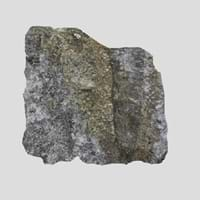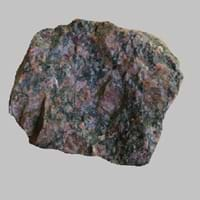Definition
Marl is an unconsolidated sedimentary rock consisting of clay and lime
Monzogranite is a type of igneous rock and belongs to biotite granite rocks that are considered to be the final fractionation product of magma
Discoverer
Unknown
Unknown
Etymology
From Old French marle, from Late Latin marglia
From its mineral content
Class
Sedimentary Rocks
Igneous Rocks
Sub-Class
Durable Rock, Soft Rock
Durable Rock, Hard Rock
Group
Not Applicable
Plutonic
Other Categories
Fine Grained Rock, Opaque Rock
Coarse Grained Rock, Opaque Rock
Texture
Earthy
Porphyritic
Color
Beige, Brown, Green, Grey, White
Black, Grey, Orange, Pink, White
Durability
Durable
Durable
Appearance
Rough and Dull
Veined or Pebbled
Interior Uses
Decorative Aggregates, Floor Tiles
Bathrooms, Countertops, Decorative Aggregates, Entryways, Floor Tiles, Homes, Hotels, Interior Decoration, Kitchens, Stair Treads
Exterior Uses
As Building Stone, Roof Tiles
As Building Stone, As Facing Stone, Office Buildings, Paving Stone
Other Architectural Uses
Curbing
Not Yet Used
Construction Industry
Cement Manufacture, Construction Aggregate, for Road Aggregate, Making natural cement, Raw material for the manufacture of mortar
As Dimension Stone
Medical Industry
Not Yet Used
Not Yet Used
Antiquity Uses
Artifacts, Jewellery, Sculpture, Small Figurines
Artifacts, Monuments, Sculpture, Small Figurines
Commercial Uses
Creating Artwork, Soil Conditioner
Cemetery Markers, Commemorative Tablets, Creating Artwork, Curling, Tombstones
Types
Clay Marl ,Blue Marl, Red Marl, High Bank Marl, Shell Layer Marl, Under Shell Layer Marl, Sand Marl, Green Marl, Grey Marl and Clayey Marl
Muscovite-Biotite-Metagranite, Muscovite-Metagranite, Schollen-Metagranite and Biotite-Metagranite
Features
Generally rough to touch, Is one of the oldest rock, Splintery, Very fine grained rock
Available in Lots of Colors and Patterns, It is One of the Oldest, Strongest and Hardest Rock
Archaeological Significance
Monuments
Not Yet Used
Used
Famous Monuments
Not Applicable
Data Not Available
Famous Sculptures
Data Not Available
Data Not Available
Pictographs
Used
Not Used
Petroglyphs
Used
Not Used
Formation
Marl forms when very fine-grained clay particles are deposited in water which settles at the bottom of water bodies and are compacted by overlying sediment; the water squeezes out and hence forming Marl rock.
Monzogranite is a fine-grained, hard rock which is a type of metasomatite, essentially altered basalt. It forms with or without crystallization, either below the surface as intrusive rocks or on the surface as extrusive rocks.
Mineral Content
Calcite, Clay, Dolomite, Gypsum, Micas, Pyrite, Quartz
Apatite, Biotite, Hornblende, Microcline, Perthite, Plagioclase, Quartz, Titanite, Zircon
Compound Content
Aluminium Oxide, NaCl, CaO, Iron(III) Oxide, Silicon Dioxide
Aluminium Oxide, CaO, Iron(III) Oxide, FeO, Potassium Oxide, MgO, MnO, Sodium Oxide, Phosphorus Pentoxide, Silicon Dioxide, Titanium Dioxide
Types of Metamorphism
Not Applicable
Burial Metamorphism, Cataclastic Metamorphism, Contact Metamorphism
Types of Weathering
Biological Weathering, Chemical Weathering
Biological Weathering, Chemical Weathering, Mechanical Weathering
Types of Erosion
Chemical Erosion, Coastal Erosion, Water Erosion, Wind Erosion
Chemical Erosion
Grain Size
Very fine-grained
Coarse Grained
Fracture
Conchoidal
Not Available
Porosity
Highly Porous
Less Porous
Luster
Dull
Dull to Grainy with Sporadic parts Pearly and Vitreous
Compressive Strength
Not Available
Cleavage
Not Available
Not Available
Toughness
2.6
Not Available
Specific Gravity
2.2-2.8
2.6-2.7
Transparency
Opaque
Opaque
Density
2.4-2.8 g/cm3
2.6-2.8 g/cm3
Specific Heat Capacity
Not Available
Resistance
Heat Resistant, Impact Resistant
Heat Resistant, Wear Resistant
Deposits in Eastern Continents
Asia
India, Pakistan, Russia
China, India, Iran, Saudi Arabia, Sri Lanka, Taiwan, Thailand, Turkey, Vietnam
Africa
Ethiopia, Kenya, Morocco, South Africa
Angola, Egypt, Madagascar, Namibia, Nigeria, South Africa
Europe
Austria, France, Germany, Greece, Italy, Romania, Scotland, Spain, Switzerland
Austria, Belgium, Finland, France, Germany, Italy, Norway, Sardinia, Spain, Switzerland, The Czech Republic, Venezuela
Others
Not Yet Found
Not Yet Found
Deposits in Western Continents
North America
USA
Canada, USA
South America
Colombia, Ecuador, Peru
Not Yet Found
Deposits in Oceania Continent
Australia
New South Wales, Victoria, Western Australia
Not Yet Found
Marl vs Monzogranite Characteristics
Though some rocks look identical, they have certain characteristics which distinguish them from others. Characteristics of rocks include texture, appearance, color, fracture, streak, hardness etc. Marl vs Monzogranite characteristics assist us to distinguish and recognize rocks. Also you can check about Properties of Marl and Properties of Monzogranite. Learn more about Marl vs Monzogranite in the next section. The interior uses of Marl include Decorative aggregates and Floor tiles whereas the interior uses of Monzogranite include Bathrooms, Countertops, Decorative aggregates, Entryways, Floor tiles, Homes, Hotels, Interior decoration, Kitchens and Stair treads. Due to some exceptional properties of Marl and Monzogranite, they have various applications in construction industry. The uses of Marl in construction industry include Cement manufacture, Construction aggregate, For road aggregate, Making natural cement, Raw material for the manufacture of mortar and that of Monzogranite include As dimension stone.
More about Marl and Monzogranite
Here you can know more about Marl and Monzogranite. The life cycle of a rock consists of formation of rock, composition of rock and transformation of rock. The composition of Marl and Monzogranite consists of mineral content and compound content. The mineral content of Marl includes Calcite, Clay, Dolomite, Gypsum, Micas, Pyrite, Quartz and mineral content of Monzogranite includes Apatite, Biotite, Hornblende, Microcline, Perthite, Plagioclase, Quartz, Titanite, Zircon. You can also check out the list of all Sedimentary Rocks. When we have to compare Marl vs Monzogranite, the texture, color and appearance plays an important role in determining the type of rock. Marl is available in beige, brown, green, grey, white colors whereas, Monzogranite is available in black, grey, orange, pink, white colors. Appearance of Marl is Rough and Dull and that of Monzogranite is Veined or Pebbled. Properties of rock is another aspect for Marl vs Monzogranite. The hardness of Marl is 2-3 and that of Monzogranite is 6-7. The types of Marl are Clay Marl ,Blue Marl, Red Marl, High Bank Marl, Shell Layer Marl, Under Shell Layer Marl, Sand Marl, Green Marl, Grey Marl and Clayey Marl whereas types of Monzogranite are Muscovite-Biotite-Metagranite, Muscovite-Metagranite, Schollen-Metagranite and Biotite-Metagranite. Streak of rock is the color of powder produced when it is dragged across an unweathered surface. The streak of Marl and Monzogranite is white. The specific heat capacity of Marl is Not Available and that of Monzogranite is 0.79 kJ/Kg K. Depending on the properties like hardness, toughness, specific heat capacity, porosity etc., rocks are resistant to heat, wear, impact, etc.Marl is heat resistant, impact resistant whereas Monzogranite is heat resistant, wear resistant.





